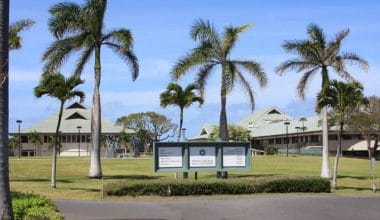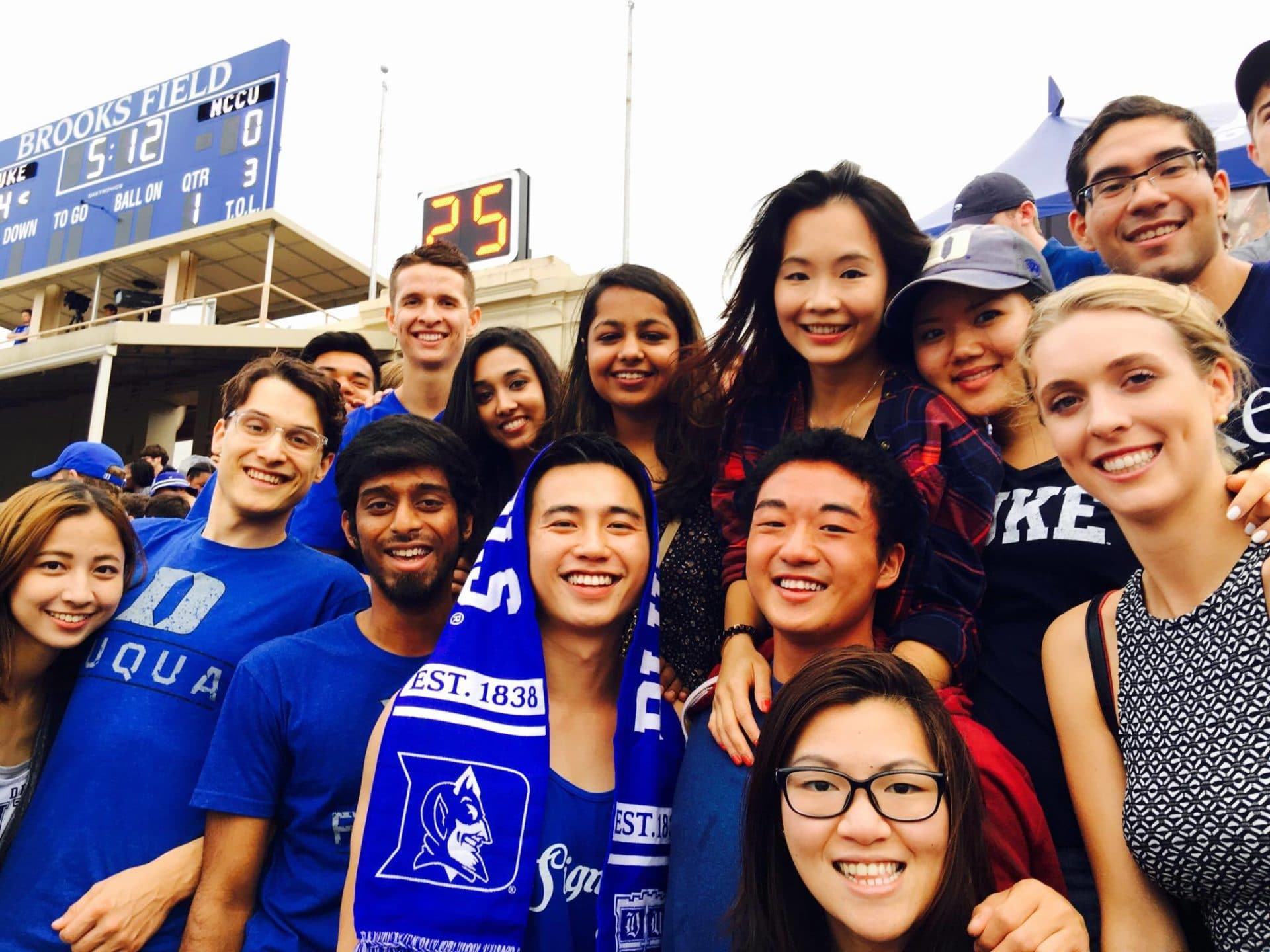The United States is the world’s top student destination. From time immemorial students from all streams of the world come to the center of academic excellence to partake in academic romance.
To study in the U.S, you must obtain a student visa. In this article, World Scholarship Forum offers a detailed guide on how to get a student visa for the U.S. from India.
According to US Embassy and Consulates in India, the number of Indians studying in the United States increased by almost three percent over the last year to 202,014.
The US universities are able to provide the best possible platform to international students, which is evident in the influx of student visa applications received annually. Moreso, the Country’s education system offers the most comprehensive coursework to students with an emphasis on high-quality learning immersed in both practical and theoretical learning.
In this guide, our outline of how to get a student visa for the U.S. from India is easy peasy. All you need to do is carefully read through.
Take a look at the table of contents below to get a quick view of what this article covers.
Do I Need A Student Visa To Study in U.S. From India?
The US Government provides opportunities to Indian students to study in the country but as a prerequisite, you’ll have to get a student visa first.
According to travel.state.gov, a citizen of a foreign country who wishes to enter the United States must first obtain a visa, either a nonimmigrant visa for temporary stay or an immigrant visa for permanent residence. Therefore, you must have a student visa to study in the United States. Your course of study and the type of school you plan to attend determine whether you need an F visa or an M visa.
Let’s take a look at the types of study visas and their application requirements:
The US Government offers three different student visa types:
| S.No. | Types of student visa | Description |
| 1 | F-1 Student Visa | To study at an accredited US college or university or to study English at an English language institute |
| 2 | J Exchange Visa | Enables you to participate in an exchange program, including high school and university study |
| 3 | M Student Visa | This type of visa is for non-academic or vocational study or training in the US |
*For detailed information, please visit the US Government’s Department of State website.
As a basic step, you must first apply and be accepted by a US school or university that is certified by the Student and Exchange Visitor Program (SEVP). Once accepted, you will receive a Form I-20 from the institution’s international student office, which is a paper record of your information in the database called the Student and Exchange Visitor Information System (SEVIS).
How Can I Get Student Visa For U.S. From India?
To get a student visa for U.S. in India, you have to adhere to the following steps:
- Apply to and be accepted by a Student and Exchange Visitor Program (SEVP)-approved school in the US (six to twelve months prior to US study)
- Pay the Student and Exchange Visitor Information System (SEVIS) fee.
- Complete a US student visa application along with a recent photo(s)
- Pay the visa application fee.
- Schedule and attend a visa interview.
#1 Apply to an SEVP-approved institution
Indians wishing to study in the United States must ensure to choose an institution program accredited by the US government’s Student and Exchange Visitor Program (SEVP)
This accreditation is important because it ensures your degree is recognized by other academic institutions, professional associations, employers, and globally. Only SEVP approved institutions are licensed to enlist students in the Student and Exchange Visitor Information System (SEVIS) which provides the necessary documents needed to apply for a US student visa.
Once you have been accepted by the institution you applied to, the university will enroll you in the SEVIOS system and you will be sent a SEVIS-generated document called Form I-20 if you are eligible for an F or M visa, or Form DS-2019 if you are eligible for a J visa.
The SEVP supervises international students in the F and M visa classifications, while the Department of State (DoS) manages Exchange Visitor Programs and international students on J visa classifications.
SEE ALSO: Dean’s Indian Scholarship for International Relations
#2 Pay the SEVIS fee
Students willing to apply for the US student visa must pay the SEVIS fee at least three days prior to submitting an application for a US visa. To pay the fee, you need to file either an online or paper form.
After you receive the Form I-20 and register in SEVIS, you may apply at a U.S. Embassy or Consulate for a student (F or M) visa. You must present Form I-20 to the consular officer when you attend your visa interview.
The I-901 fee is US$200 for F/M visa holders and $180 for J student visa holders. J visa holders working as camp counselors, au pairs, or in summer work/travel pay $35 instead.
Visit the U.S. Immigration and Customs Enforcement (ICE) Student and Exchange Visitor Program (SEVP) website to learn more about SEVIS and the SEVIS I-901 Fee.
#3 Complete a US student visa application
Once you have received your SEVIS form and paid the SEVIS fee, you can book an appointment with a US consulate or embassy in your home country for a US student visa application. Endeavor to apply as early as possible irrespective of when your program is due to start. Your visa can be issued up to 120 days before you’re due to enter the US. If you can’t find your country in the list online, you can still find your US embassy or consulate in your country using the US embassy’s website.
While filling the online visa application: DS-160, you need to attach the following details:
- Name and date of birth
- Address and phone number
- Passport details
- Details of travel plans, and travel companions
- Details of previous US travel
- Your point of contact in the US
- Family, work, and education details
- Security, background, and medical health information
- SEVIS ID and address of US school/program you intend to enroll in (as printed on I-20 or DS-2019 form)
You’ll also need to upload a suitable recent photo of yourself in the format explained in the photograph requirements. If your photo upload fails you’ll need to take a printed photograph – which meets the requirements – to your visa interview.
Once the visa application form is completed, you’ll need to electronically sign your DS-160 by clicking the “Sign Application” button at the end. After your application is uploaded, you’ll be sent a confirmation page with a barcode, barcode number, and your application ID number which you’ll need to print out and take to your visa interview appointment. You do not need to print the full application.
RELATED POST: Top 7 Success Tips for Your Student Visa Interview
#4 Pay the visa application fee
The visa application fee is also called the Machine Readable Visa Fee, or ‘MRV fee’. Ensure you review the fee payment instructions available on your embassy or consulate website as methods may differ. Nonetheless, there are three ways to pay the non-refundable, non-transferrable visa application fee:
- In person at an approved bank
- By phone (you’ll receive a fee confirmation number)
- Online (you’ll need to print your receipt)
During your research, don’t worry if you come across the term ‘visa issuance fee based on reciprocity’ – this does not apply for F1, F2, M1, M2, J1 and J2 visa applicants.
At the point of payment, you’ll be asked for the MRV fee receipt when you get to your visa interview appointment. Some J visa applicants will not need to pay application processing fees if participating in a US Agency for International Development (USAID) program or a federally funded educational and cultural exchange program with a program serial number beginning G-1, G-2, G-3 or G-7.
#5 Schedule and attend a US student visa interview
One of the last steps in getting a US student visa is to arrange and attend a visa interview. You can do this either online or using the phone, by calling your nearest US embassy or consulate. In either case, you should complete the MRV fee payment first, as you may need to give your MRV fee number.
A consular officer will interview you to ascertain if you are qualified to receive a student visa. You must establish that you meet the requirements under U.S. law to receive a visa.
Ink-free, digital fingerprint scans are taken as part of the application process. They are usually taken during your interview, but this varies based on location.
After your visa interview, the consular officer may resolve that your application requires further administrative processing. Whatever be the case, the consular officer will inform you if this is required.
After the visa is approved, you may need to pay a visa issuance fee, and make arrangements for the return of the passport and visa to you.
Interview questions will focus on the following topics:
- Why you chose to study in the U.S.
- Academic qualifications (test scores) and questions about the university you enrolled in
- Ties and obligations that ensure your return to your home country, after graduation
- Proof that you have the means to finance your education
After the US Student Interview, What Next?
Student (F and M) visas for new students can be issued up to 120 days in advance of the start date for a course of study. If your visa application is successful or unsuccessful, you will be notified.
Once you’ve been granted a US visa, you can travel to a U.S. port-of-entry (generally an airport) and request permission to enter the United States. The Department of Homeland Security (DHS), U.S. Customs and Border Protection (CBP) officials at the port-of-entry have authority to permit or deny admission to the United States.
After you present your passport, visa, and Form I-20 at the port-of-entry, a CBP official will make this decision. Once you are allowed to enter the United States, the CBP official will provide an admission stamp or paper Form I-94, Arrival/Departure Record.
What Are The Documents Required For Student Visa Interview?
There are specific documents needed to be tendered before and during the student visa interview. These documents are a plain representation of who the applicant is and the necessary steps taken. So, endeavor to come with the right documents.
You can check the website of the embassy or consulate where you will apply to make sure you have all the required documents needed for your interview. These documents may include:
- Passport valid for at least six months beyond your period of stay in the US. If more than one person is included in your passport, each person who needs a visa must submit a separate application. You may also need to bring all your current and old passports.
- Signed SEVIS Form I-20 or DS-2019 (including individual forms for spouse/children)
- Form DS-7002 (for J-1 Trainee and Intern visa applicants only)
- SEVIS fee receipt
- DS-160 application confirmation page with barcode and application ID number
- MRV fee payment confirmation receipt
- Printed copy of visa interview appointment letter
- 1-2 photographs in the format explained in the photograph requirements. Should be printed on photo quality paper.
You should also be prepared to provide the following documents:
- Transcripts and diplomas from previous institutions attended.
- Your intent to depart the United States upon completion of the course of study.
- Scores from standardized tests required by the educational institution such as the TOEFL, LSAT, GRE, GMAT, etc.
- Financial evidence showing you or your sponsor (i.e. parents or a government sponsor) has sufficient funds to cover your tuition, travel, and living expenses during your stay in the US.
You can also bring along a separate written list of all your previous employers and schools you have attended for reference.
Any derivative visa applicants will need to take:
- A copy of the marriage and/or birth certificate for proof of relationship
- A copy of the principal applicant’s visa (i.e. F-1, M-1, J-1), or official documentation from the USCIS confirming the principal applicant’s status.
- A copy of the personal data page from the principal applicant’s passports.
Where To Apply For U.S Student Visa
The SEVP-approved school (the school that offered you admission) will issue you a Form I-20. After you receive the Form I-20 and register in SEVIS, you may apply at a U.S. Embassy or Consulate for a student (F or M) visa. You must present Form I-20 to the consular officer when you attend your visa interview.
For Biometrics interview you need to visit –
- Delhi –
S – 1 American Plaza, (Hotel Eros Managed by Hilton), International Trade Tower
Nehru Place, New Delhi – 110019 - Mumbai –
Trade Center, Ground Floor, G Block,
Bandra Kurla Complex,
Bandra East, Mumbai – 400051 - Chennai –
No 3, Cenotaph Road,
Teynampet, Chennai, Tamil Nadu – 600018 - Hyderabad –
1-8-384/385, Gowra Grand, S.P.Road,
Begumpet, Secunderabad – 500003 - Kolkata –
Jasmine Tower, 31, Shakespeare Sarani (1st Floor)
Kolkata – 700017
US Embassy and Consulates Addresses –
- The U.S. Embassy in New Delhi
Shanti Path, Chanakya Puri 110021 - The U.S. Consulate General in Mumbai (Bombay)
C-49, G-Block, Bandra Kurla Complex, Bandra East, Mumbai 400051 - The U.S. Consulate General in Chennai (Madras)
220 Anna Salai, Gemini Circle, 600006 - The U.S. Consulate General in Kolkata (Calcutta)
5/1 Ho Chi Minh Sarani, 700071 - The U.S. Consulate General in Hyderabad
Paigah Palace, 1-8-323, Chiran Fort Lane, Begumpet, Secunderabad 500 003
How Long Does It Take To Get A Student Visa For U.S?
It takes two months to get your student visa process approved. Nonetheless, Indian students who wish to study in the U.S must commence an application for a student visa 120 days before the said program start date. This will enable the applicant to go through the whole process of the application carefully.
You can also access available scholarships for Indians to study in the United States by clicking HERE.
How Much Does It Cost To Obtain A Student Visa In the U.S From India?
As an applicant from outside the US, you will have to pay US$160 as an application visa fee (do check the latest fee when applying here).
There is now a US$350 SEVIS fee on F and M visa applications and US$220 on most of the J Visa applications, this includes the cost of the computer system which is used to record your stay in the United States (SEVIS).
How Long Is A Student Visa Valid For In The United States?
After having been granted an F-1 or M-1 student visa, and actually entered the United States, you can stay and pursue your studies until the expiration date shown on your I-94. That document can be accessed online from U.S. Customs & Border Protection (CBP).
After the program ends you will have 60 days to depart the U.S. What this entails is that, foreign students in the United States with F visas must depart the United States within 60 days after the program end date listed on Form I-20, including any authorized practical training.
Failure to depart the United States on time will result in being out of status, and under U.S. law, visas of individuals who are out of status are automatically voided. This can also result to being ineligible for visas into the United States in the future
Foreign students may request an extension through U.S citizenship and Immigration Services
What Do I Do If My Student Visa Application To Study in The United States Is Rejected?
If your visa application has been denied by the US, that decision is final, and you cannot appeal. Nevertheless, you can reapply, and you can apply for a waiver of ineligibility.
If you are denied an F-1 visa, it is pertinent for you to find out why. For instance, if you are denied because you cannot prove you have the means to finance your education, you know what you have to fix the next time around. Many visas are denied because of missing or inadequate paperwork. When you find out why you were denied, you can fix the problem before your next interview.
To reapply, you will have to pay the nonrefundable application fee of $160 again for each new application. Try not to falsify or submit fraudulent documentation as this may jeopardize your chances of applying for any immigration status in the USA.
Some common reasons that student visas are denied are:
- Lack of financial proof to fund the student’s education and life in the USA
- Missing or incorrect documents
- The consular officer is not convinced or does not have documented proof of the student’s intention to their home country after completion of education
- Failed background check
- Behavior during interview or failure to explain answers to the consular officer
Students are allowed to re-apply three times within a year. If you are struggling with getting your student visa approved, it’s recommended that you consult with your consular officers or an immigration attorney.
Conclusion
It is important to note that, a visa does not guarantee entry into the United States, it only allows a foreign citizen to travel to a U.S. port-of-entry (generally an airport) and request permission to enter the United States. The Department of Homeland Security (DHS), U.S. Customs and Border Protection (CBP) officials at the port-of-entry have authority to permit or deny admission to the United States.
After you present your passport, visa, and Form I-20 at the port-of-entry, a CBP official will make this decision. Once you are allowed to enter the United States, the CBP official will provide an admission stamp or paper Form I-94, Arrival/Departure Record.
FAQs On How To Get Student Visa For U.S From India
As an applicant from outside the US, you will have to pay US$160 as an application visa fee (do check the latest fee when applying here).
The US Government provides opportunities to Indian students to study in the country but as a prerequisite, you’ll have to get a student visa first.
After having been granted an F-1 or M-1 student visa, and actually entered the United States, you can stay and pursue your studies until the expiration date shown on your I-94. That document can be accessed online from U.S. Customs & Border Protection (CBP).
To get a student visa for the U.S. in India, you have to adhere to the following steps:
Apply to and be accepted by a Student and Exchange Visitor Program (SEVP)-approved school in the US (six to twelve months prior to US study);
Pay the Student and Exchange Visitor Information System (SEVIS) fee;
Complete a US student visa application along with a recent photo(s);
Pay the visa application fee;
Schedule and attend a visa interview.





